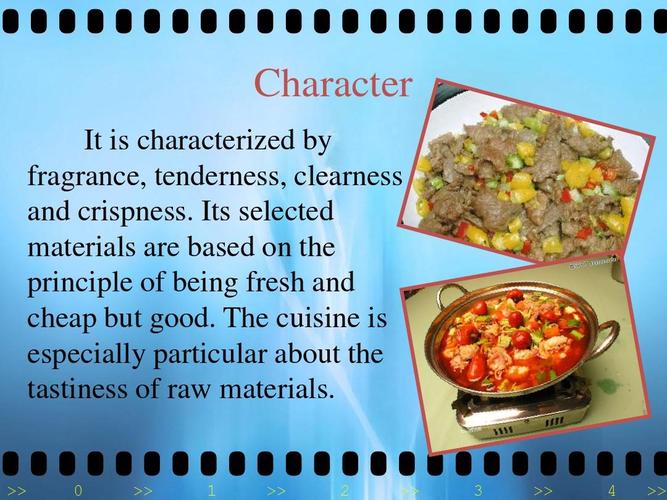Content:
Xiang cuisine, also known as Hunan cuisine, is a rich and vibrant culinary tradition that originates from the Hunan province in southern China. Known for its bold flavors and fiery spices, Xiang cuisine has captivated the taste buds of both locals and food enthusiasts around the world. This article aims to delve into the essence of Xiang cuisine, exploring its history, key ingredients, signature dishes, and its enduring influence on Chinese gastronomy.

The Rich History of Xiang Cuisine

Xiang cuisine has a history that spans over 2,000 years, with its roots deeply embedded in the cultural heritage of Hunan province. The region's strategic location has historically made it a crossroads for various trading routes, leading to the fusion of diverse culinary influences. This rich tapestry of cultural exchange has given rise to the unique and robust flavors that define Xiang cuisine.
One of the most significant historical events that shaped Xiang cuisine was the migration of the Han Chinese into the region during the Qin and Han dynasties. This migration brought with it a variety of cooking techniques and ingredients, which were then adapted to the local climate and availability of produce.
Key Ingredients and Spices
The heart and soul of Xiang cuisine lie in its bold and vibrant flavors, achieved through the use of a variety of spices and ingredients. Some of the most iconic ingredients include chili peppers, garlic, ginger, and Sichuan peppercorns. These spices are used liberally in dishes, often resulting in a mouth-numbingly spicy sensation that is unique to Xiang cuisine.
Chili peppers are perhaps the most defining element of Xiang cuisine. They are used in various forms, from fresh to dried, and are often ground into a paste or powder to add a fiery kick to dishes. Garlic and ginger are also used extensively, providing a robust aromatic base that complements the spiciness of the chili peppers.
Signature Dishes of Xiang Cuisine
Xiang cuisine is renowned for its diverse array of dishes, each with its own unique flavor profile. Some of the most famous signature dishes include:
1. Changsha Chicken (Changsha Ji): This dish features tender slices of chicken stir-fried with chili peppers, garlic, and ginger, creating a flavorful and spicy meal.
2. Stir-fried Pork with Pickled Chinese Cabbage (Shaoxing Cai): This popular dish combines the tanginess of pickled Chinese cabbage with the richness of stir-fried pork, seasoned with chili oil and Sichuan peppercorns.
3. Fried Fish with Spicy Sauce (Liangjun Fish): A Hunan specialty, this dish is made with whole fish fried until crispy and then topped with a spicy, garlic-infused sauce.
Cultural Significance and Influence
Xiang cuisine holds a significant place in the hearts of the Hunanese people, reflecting their resilience and spirit. The bold flavors of the cuisine are often seen as a metaphor for the people of Hunan, who are known for their tenacity and bravery.
Moreover, the influence of Xiang cuisine extends beyond Hunan province. It has played a crucial role in shaping the broader landscape of Chinese cuisine. Many of the techniques and ingredients used in Xiang cuisine have been adopted by other regional cuisines, leading to a rich tapestry of flavors across the country.
Conclusion
In conclusion, Xiang cuisine is a testament to the rich culinary heritage of Hunan province. Its bold flavors, fiery spices, and diverse array of dishes have made it one of the most captivating and influential regional cuisines in China. As food enthusiasts continue to explore the flavors of Xiang cuisine, it is clear that this vibrant culinary tradition will continue to captivate and delight for generations to come.
自古以来,我国饮食文化源远流长,各地美食争奇斗艳。其中,湘菜以其独特的口味和深厚的文化底蕴,独树一帜,成为我国八大菜系之一。为湘菜馆撰写对联,既能展现其独特魅力,又能传承和弘扬中华美食文化。本文将以此为题,探讨湘菜馆对联的撰写。
一、对联的基本要求
对联,又称对子,是一种汉语特有的文学形式。它要求字数相等、词性相对、意义相关。一副好的对联,既要符合这些基本要求,又要富有艺术性和趣味性。

工作时间:8:00-18:00
电子邮件
扫码二维码
获取最新动态
